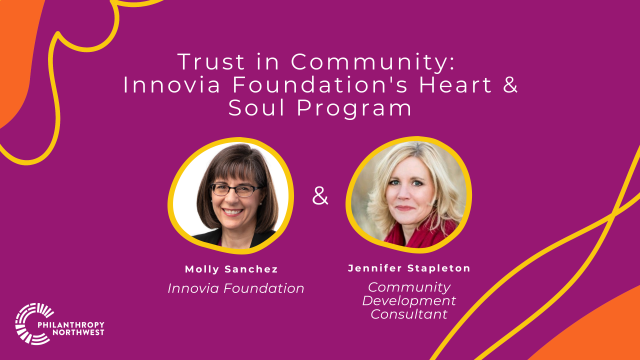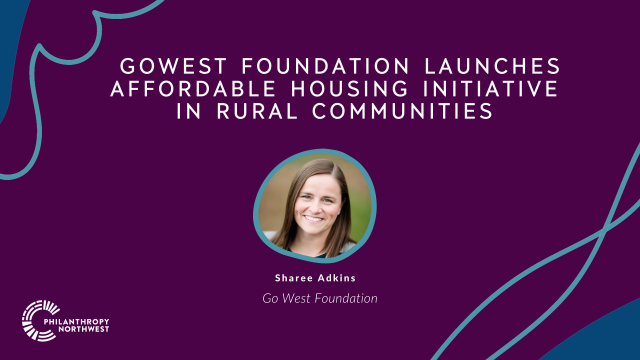Lawson F. Knight, Intermountain Impact Investments
Some people crave security and predictability in their careers. Not me. I'm drawn to adventure and invention — doing things we don't know how to do yet. One of my mentors, Dr. Ellen Wolf, past president and board member of the Blue Mountain Community Foundation, recognized this and predicted that I would someday leave my comfortable position as the foundation's executive director to blaze new trails. She was right. With a colleague in Wyoming, I co-founded Intermountain Impact Investments last year.
This work is less about trail-blazing and more about bridge-building, however. Our role as an intermediary is to connect the two abutting sides: philanthropic investors (the supply) and social enterprises seeking capital (the demand). Rural communities tend to have less access to philanthropic dollars and impact capital. Within the Intermountain West's expanse of geography, we are evangelizing the deployment of capital for social and financial return.
One reason I am bullish on impact investing begins as a function of math. Mission investing — impact investing by foundations — aims to help philanthropic capital go further and last longer. To illustrate the point, I’ll share this chart that I’ve kept since end of the Dot-Com bust in the early 2000s, forecasting our current low-return environment:
With a 2 percent rate of inflation and 5 percent required spending rate, a foundation must return 7 percent to break even. If a simple balanced portfolio returns 6 percent in our current environment, the endowment shrinks 1 percent per year in real terms. But by adding program-related investments (PRIs) to their grantmaking portfolios, foundations can reduce the need to seek excess return, which is to say additional risk, from traditional investments.
Let's assume the case of a $100 million foundation that grants $5 million per year. The foundation shifts $1 million of its grantmaking portfolio, or 20 percent, to program-related investments (PRIs) per year. Let's further assume that over time, 100 percent of the capital is returned without capital appreciation (interest, dividends or realized gains). On that $100 million portfolio, the $1 million returned from PRIs equals a 1 percent equivalent return for the portfolio in lieu of seeking that 1 percent from marketable securities. This combines the benefits of making a grant, where the financial return would be 0 percent, with the benefits of a traditional investment aimed at higher returns, which would carry more risk.
Getting Rural Nonprofits and Social Enterprises Ready for Investments
For nonprofits and social enterprises seeking foundation investments, concurrent with projecting financial returns, they also need to demonstrate social return. In other industries, there are clear indicators at various developmental stages that demonstrate performance. In hotels, there’s Revenue per Available Room (REVPAR), calculated by multiplying a hotel's average daily room rate (ADR) by its occupancy rate. In dry-land wheat farming, it’s bushels per acre over annual inches of rainfall per acre. What, then, is the specific measure that demonstrates progress toward a social or environmental mission? This is the new frontier of our field.
As an intermediary, we are developing a business retention and expansion investment process for rural community and economic development. We’ve discovered public capital deployment through traditional institutions, such as ports, CDCs and CDEs that require a private match. In times past, a local commercial bank would have been a good partner on such a transaction. We still have banks in rural communities, but in some cases they are no longer staffed with a local banker who can evaluate factors like character and context.
Identifying and exploring these opportunities requires working with partners in our communities. In Idaho, the Idaho Rural Partnership is a state-sponsored collaboration that conducts frequent community reviews and aims "to efficiently and effectively provide the host community with objective information from external community development professionals, create a forum to express internal leadership viewpoints and citizen feedback, recommend resources, and provide follow-up as needed.” In addition, CEDS (Comprehensive Economic Development Strategy) documents illuminate opportunities in a given region. A good example from the more than 30 we’ve catalogued in our service area is Northeast Oregon’s Economic Development District’s CEDS.
Minimizing risk has its merits, and a traditional grantmaking strategy is still the safest way to approach philanthropy. Increasingly however, the choice of adventure by foundation staff will become a career and an organizational differentiator. This frontier is the application of capital in ways that complement traditional grantmaking. It provides an opportunity for greater impact and, perhaps, greater sustainability.
Lawson F. Knight is a managing principal of Intermountain Impact Investments, based in Walla Walla, Wash. Follow them on Twitter: @i3_rural_impinv.


